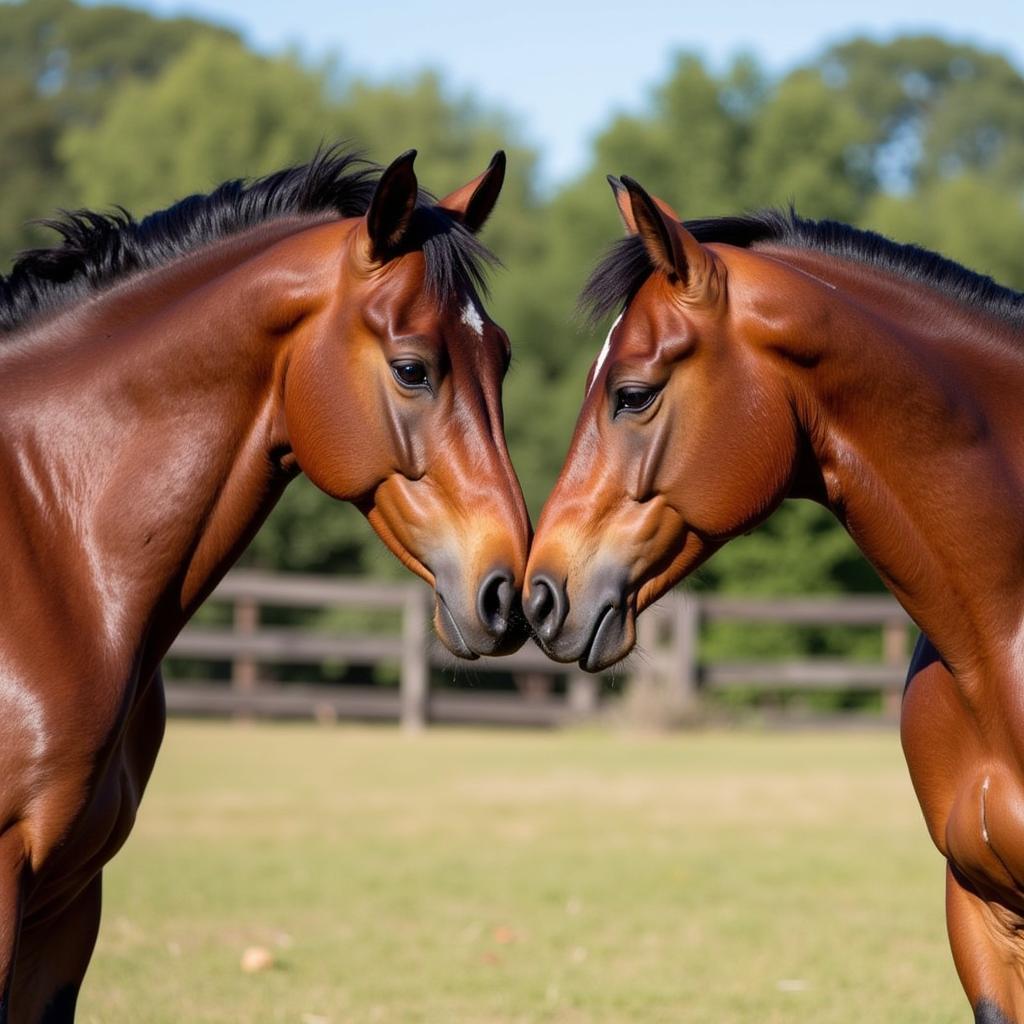Horsing around is a common term used to describe playful and energetic behavior in horses. Understanding why horses engage in this behavior is key to responsible horse ownership and ensuring their well-being. From spirited gallops to mock fights, we’ll explore the fascinating world of equine play and its importance.
Why Do Horses Horse Around?
Play is essential for horses’ physical and mental development. It helps them build strength, coordination, and social skills. Just like puppies or kittens, young horses learn about their environment and how to interact with others through play. Even adult horses benefit from horsing around as it allows them to release energy, relieve stress, and maintain social bonds.
The Benefits of Play for Horses
- Physical Fitness: Running, bucking, and rearing are all excellent forms of exercise that help horses develop muscle strength and cardiovascular fitness.
- Social Development: Play helps horses establish social hierarchies and learn how to communicate with each other. They develop valuable skills in reading body language and resolving conflicts.
- Mental Stimulation: Play provides mental stimulation and helps prevent boredom, which can lead to undesirable behaviors like cribbing or weaving.
Different Types of Horsing Around
Horses engage in a variety of playful behaviors, including:
- Running and Bucking: This is a common way for horses to release excess energy and express excitement.
- Rearing and Striking: While these behaviors can appear aggressive, they are often part of playful interactions, particularly among young horses.
- Mutual Grooming: Horses often groom each other as a sign of affection and social bonding. This can involve nibbling and scratching each other’s necks and backs.
- Play Fighting: Horses may engage in mock fights, which involve nipping, biting, and kicking. This helps them practice fighting skills without causing serious harm.
 Horses engaging in mutual grooming
Horses engaging in mutual grooming
Recognizing the Difference Between Play and Aggression
It’s crucial to distinguish between playful horsing around and genuine aggression. Playful interactions are typically characterized by relaxed body language, ears that are forward or swiveling, and a lack of sustained contact. Aggressive behavior, on the other hand, often involves pinned ears, bared teeth, and forceful contact.
Signs of Aggression
- Pinned ears
- Bared teeth
- Striking with intent to cause harm
- Aggressive vocalizations
If you are unsure whether horses are playing or fighting, it’s always best to err on the side of caution and intervene if necessary.
Encouraging Healthy Play in Horses
Providing opportunities for horses to horse around is essential for their well-being. Ensure they have ample space to run and interact with other horses. Providing toys and enrichment activities can also help stimulate play and prevent boredom.
Conclusion: The Importance of Horsing Around
Horsinng around is a natural and essential part of equine behavior. By understanding why and how horses play, we can ensure they have the opportunity to thrive both physically and mentally. Providing a safe and stimulating environment for play is a crucial aspect of responsible horse ownership.
FAQ
- Is horsing around dangerous?
- How can I tell if horses are playing or fighting?
- Should I intervene if horses are playing too rough?
- How much space do horses need to play safely?
- What are some signs of boredom in horses?
- How can I encourage my horse to play?
- Can horses of different ages play together safely?
Need further assistance? Contact us! Phone: 0772127271, Email: [email protected] Or visit us at: QGM2+WX2, Vị Trung, Vị Thuỷ, Hậu Giang, Vietnam. We have a 24/7 customer service team.